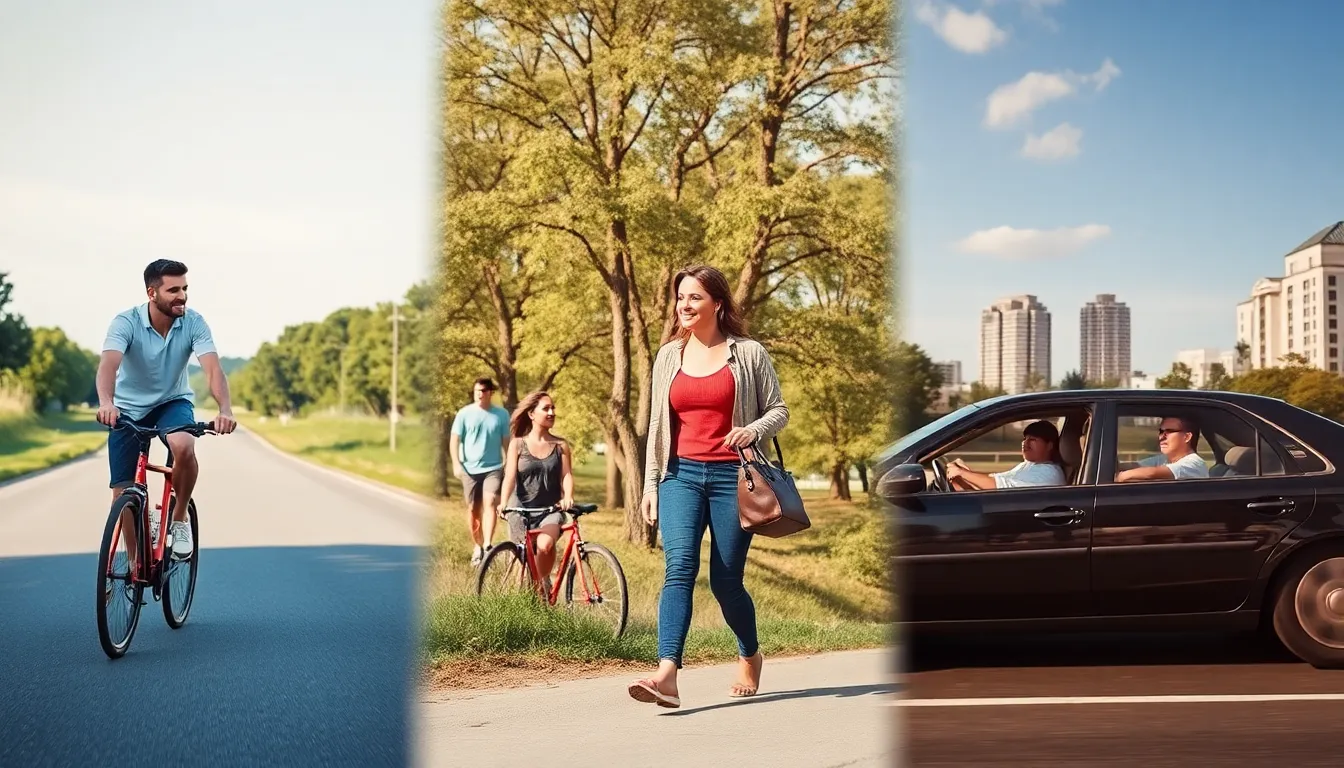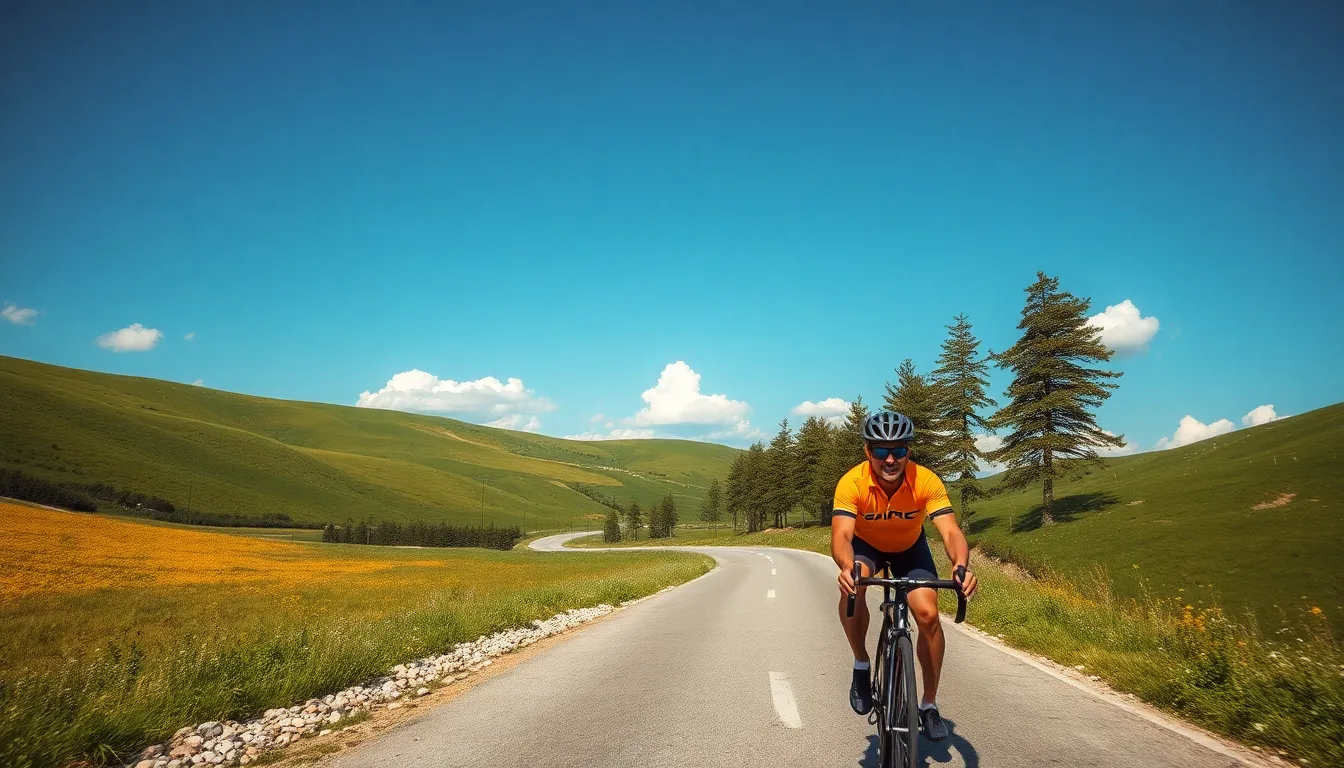Ever found yourself pondering how long it takes to cover 20 miles? Whether you’re planning a road trip or just trying to impress your friends with your math skills, knowing the answer can save you from awkward silence and endless debates.
Imagine cruising down the highway, wind in your hair, and suddenly someone asks, “How many minutes until we hit 20 miles?” Panic sets in as you scramble to recall your high school math. Don’t worry, it’s easier than it sounds. With a little bit of simple math and a dash of common sense, you’ll be able to calculate your travel time like a pro. So buckle up and let’s break it down—because who doesn’t want to be the smartest person in the car?
Table of Contents
ToggleUnderstanding Distance and Time
Understanding how distance relates to time is vital for accurate travel planning. Knowing how long it takes to cover a specific distance can enhance travel efficiency.
The Basics of Distance Calculation
Calculating distance requires understanding speed and time. Distance equals speed multiplied by time. For example, if a vehicle travels at 60 miles per hour, it takes 20 minutes to cover 20 miles. Travelers can quickly estimate travel duration by using this formula. For most vehicles, assessing average speeds provides clarity on expected travel times.
Factors Affecting Travel Time
Multiple factors influence how quickly one can travel 20 miles. Traffic conditions can significantly slow down progress. Similarly, road types, such as highways versus local streets, impact speed. Weather conditions like rain or snow can create slowdowns, as safety becomes a priority. Additionally, the type of vehicle, whether a motorcycle or a truck, plays a role in travel speed. Understanding these variables helps improve time estimations for any journey.
Different Modes of Transportation

Various modes of transportation can significantly influence how long it takes to cover 20 miles. Here’s a breakdown of estimated travel times based on different methods.
Walking
Walking at a pace of 3 to 4 miles per hour yields an estimated travel time of about 5 to 6.7 hours for 20 miles. Individuals looking to walk this distance must consider stamina and terrain. Uneven paths or inclines may slow progress, so planning a route with minimal obstacles helps. Moreover, factors such as individual fitness and weather conditions can also affect walking speed. Planning should accommodate rest breaks for hydration and recovery.
Cycling
Cycling offers a faster alternative, averaging 12 to 16 miles per hour. In this case, covering 20 miles takes approximately 1.25 to 1.67 hours. Cyclists benefit from improved fitness and the ability to navigate diverse terrains more efficiently. Selecting a road conducive to cycling—flat and smooth—can enhance speed. Safety gear remains essential during rides, particularly in traffic-heavy areas.
Driving
Driving typically stands out as the quickest option, with average speeds ranging from 30 to 60 miles per hour. Travel time for 20 miles can therefore vary from 20 to 40 minutes. Factors influencing this include road conditions and traffic patterns. Heavy traffic or roadwork may extend travel times significantly. Additionally, understanding speed limits and adhering to driving regulations ensures safety and efficiency.
Average Speed Estimates
Understanding average speeds aids in calculating how long it takes to travel 20 miles. Different modes of transportation yield varying time estimates, making it essential to know these calculations.
Calculating Time for Each Mode
Walking speeds range from 3 to 4 miles per hour. At this pace, completing 20 miles takes between 5 and 6.7 hours. Cycling, however, speeds things up significantly, averaging 12 to 16 miles per hour. This results in travel times of approximately 1.25 to 1.67 hours. Driving presents the quickest option, with times varying based on speed. A speed of 60 miles per hour allows one to cover the distance in about 20 minutes, while slower speeds may double that time when factoring in traffic.
Real-World Examples
Real-life scenarios illustrate these time estimates effectively. For instance, a leisurely walk along trails may take closer to 6 hours, depending on breaks and terrain. A dedicated cyclist, competing in a local race, could realistically complete the 20-mile distance in around 1.5 hours. Traffic conditions also influence travel time for drivers, where rush hour can extend the journey to 40 minutes. These examples clarify that various factors play a crucial role in determining how long it takes to travel 20 miles.
Tips for Efficient Travel
Maximizing efficiency during travel provides smoother experiences. A few key strategies help travelers estimate their journeys accurately.
Planning Your Route
Choosing the right route significantly affects travel time. Utilize mapping tools to find the fastest paths while avoiding traffic congestions. Consider alternate roads that may provide quicker access. Exploring real-time traffic updates helps travelers anticipate delays. Prioritize main highways which generally offer higher speed limits over smaller roads. An alternative route may save time despite appearing longer on a map. Analyzing elevation changes can also impact cycling or walking routes.
Timing Your Departure
Selecting the ideal departure time can reduce travel duration. Morning rush hours often lead to longer commutes due to increased traffic. Leaving early in the day allows for smoother travel conditions. Should weather forecasts predict storms, departing earlier mitigates delays. Scheduling trips during off-peak hours proves beneficial for drivers. Additionally, consider local events that could impact traffic flow. Understanding these patterns aids travelers in planning their departures effectively.
Knowing how long it takes to travel 20 miles can make a significant difference in planning any journey. By understanding the relationship between distance and speed it’s easier to estimate travel times accurately. Factors like traffic conditions and the mode of transportation can greatly influence these estimates.
With the right strategies and tools travelers can confidently navigate their routes. Whether driving cycling or walking being aware of potential delays and planning accordingly ensures a smoother experience. Ultimately having a solid grasp of travel time calculations empowers individuals to make informed decisions on their journeys.





